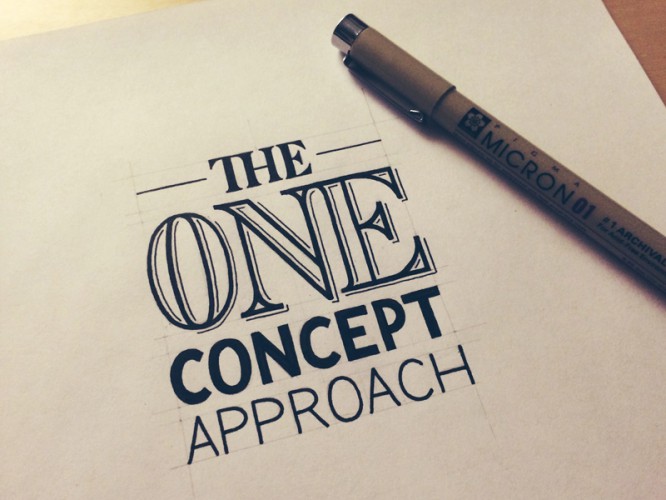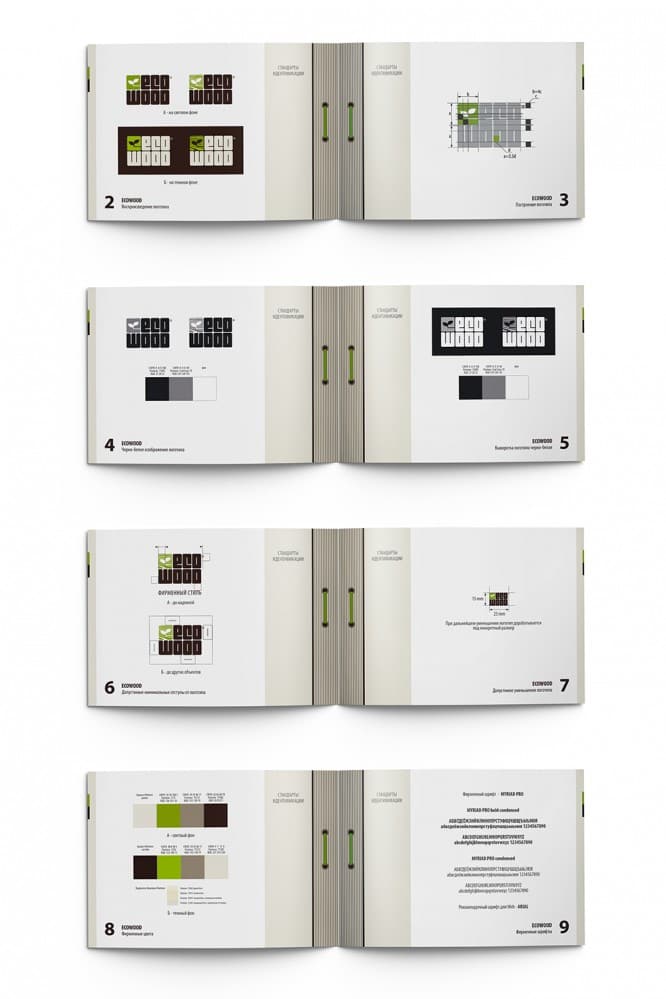The Pro’s Approach to Logo Design (Part 1)
The Pro’s Approach to Logo Design (Part 1)
Translation of the article “The One Concept Approach: How a Professional Designs A Logo” from professional designer and creator of lettering logos Sean McCabe, who shared his vision of the problem of multiple prototypes.
Sean is sure that showing customers more than 1 prototype is bad and does not mean “a lot of work done”, but only makes it difficult to make the right decision and complicates the designer’s work.
When it comes to logo design, many designers are ready to provide the customer with several options to allow them to choose the one they like best. Many even develop different conceptual approaches.
But what purpose do they pursue with this approach? What are the benefits of this?
Trust me, if a designer has two options to choose from, they haven’t done their job. Design is an established, iterative process. At first, you have a lot of ideas, which you gradually improve. You discard the least effective ones and develop the ones that best fit the project’s goal.
It is the designer’s job to create a process that will produce the most effective concept. If a designer cannot decide which of the remaining options best suits the requirements of the project, he is not ready to work with clients.

The problem of variability of choice
If you think that a designer is designing a logo for a client, you are wrong. Professional designers create a logo for the consumer. You are not designing for a customer. It is not your responsibility to fulfill the client’s whims.
You fulfill these whims just when you submit a few concepts. The client chooses the one that he likes best. The one that is more in line with his subjective taste. But again, for whom is the logo created? For the target audience. There is no benefit for a client to like a logo that does not fit the target audience and does not serve the purpose of the project.
“If you are looking for ‘options’, I am not the one for you.”
These are the words I say to my potential clients. I’m not afraid to be frank with them. I make this requirement early on in order to establish the right model of behavior between me and the customer.
You are doing a disservice when you provide multiple options. It’s as if a doctor or mechanic has a myriad of possible solutions – I prefer to trust their professional advice, the best solution based on their vast experience. This is exactly what I am asking them for.
Thus, I tell clients that if they are interested in a professional who is willing to use their experience to create a product that will be most effective for their business, then they are on the right track.
Why do customers want to see options?
Customers want multiple options because they are used to counting on it. They expect the designer to do just that.
Because there is an alarming number of non-professional designers in this area, and clients get used to expecting this behavior after long-term interaction with them.
Designers only confirm their expectations because they continue to work unprofessionally. They are not competent enough to establish a process that offers the single most effective solution, and instead, they mistakenly leave the client to make the design decision and cater to his subjective taste.
All this negatively affects the efficiency of the project and the industry as a whole. Despite the fact that these designers may consider themselves professionals, many of them may have worked in the design industry for many years, in fact they remain only performers who do not offer solutions, but “options”.
Changing subjective perceptions
If you present two options to a client, red and blue, and ask him to choose the best one, he will choose. However, if you put yourself in the position of the specialist who provides the best solution, the situation will change dramatically.
You tell the client that if he hired you, you yourself tell him which color will make him more money. The customer in this situation does not think about his preferences, because here they do not matter. He is ready to give you the right to decide which of the options will be the most advantageous.
This is the whole difference between a performer and a professional:
• The contractor completes the task
• Professional offers a solution
When you offer multiple options, you are acting like a performer. The emphasis is on the time spent and the result obtained. You become one of the costs, you play the role of a commodity.
If you offer a solution, then you work like a professional. The emphasis in this case is on the value of the product you have created. Your work becomes a profitable investment of money, and its value is measured according to the value of what you create.
Let’s take a look at how to lay the foundation for the trust you need when working with a client.
Defining roles
Without a doubt, a successful project is impossible without preparatory work. This is achieved through communication with the client at the initial stages of work. You must establish areas of responsibility. Your roles should be clearly defined in the contract and also negotiated with the client.
What is the customer responsible for?
The customer is only responsible for two things: Content and Purpose. This is the information that you should get from the TK. These two aspects must be defined before you start working on a project, they are constant and unchanging.
What is the designer responsible for?
The designer is responsible for the design. And this includes absolutely all design decisions. Choosing the best option is a design decision and you shouldn’t trust the client. Design is your job, and as a professional, you shouldn’t shift the responsibility for making decisions that apply to your job.
Define expectations
Your client should know what to expect at each stage of the job. From start to finish, there should be no unpredictable steps. The whole process should be divided into two parts – General and Individual.
General process
• This is a general principle for organizing your work. It should contain all the general stages and stages of development of each individual product.
• This principle should be posted on your site so that potential customers can familiarize themselves with it.
Individual process
• This is a scheme of work that changes depending on each client.
• You should familiarize the customer with it at the very beginning of work.
Credit of trust
The overall process should be posted on a public site to allow the client to see how you work. This instills in them an understanding of what to expect from you. The Customized Process is the next step; it adjusts the Overall Process for a specific client and his project. This is a long way to go to prevent future problems.
Confidence
If your work process is transparent and understandable, and the client knows what to expect from you, trust will be based on this. Trust is essential to build this engagement that results in just one most effective concept.
Preliminary sketches
As a way of building further trust, use sketches to demonstrate how you work. They are designed to show the process of work in its entirety. Yes, the client can get acquainted with the steps of the General Process, but the more detailed analysis of the problem you demonstrate, the better the client is aware of the work you have done. This is also a very important part of building trust.
Author: Sean McCabe
Translation: Katerina Sorokina
…


